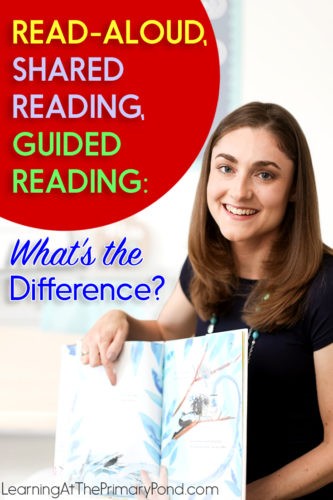Understanding the nuances of literacy instruction can be challenging, especially with terms that sound similar. Read-alouds, shared reading, and guided reading are three such instructional practices. While they share the goal of improving students’ reading abilities, they differ in significant ways. Recognizing these differences allows educators to leverage each practice effectively, nurturing stronger, more confident readers.
This article clarifies the distinctions between shared reading and guided reading, focusing on key aspects like timeframe, skills addressed, the teacher’s role, the students’ role, and text difficulty.
Key Differences: Shared Reading vs. Guided Reading
To better understand the “What Is The Difference Between Shared Reading And Guided Reading” question, let’s compare these routines in several key areas:
- Timeframe
- Skills to address
- The teacher’s role
- The students’ role
- Text difficulty
Timeframe Comparison
Shared reading sessions typically last longer than read-alouds but may be shorter than guided reading sessions, depending on the text’s complexity and the lesson’s focus. Guided reading, with its emphasis on independent reading and targeted instruction, often requires a more extended timeframe.
Skills Addressed
Both shared reading and guided reading are versatile for addressing a wide range of reading skills, including phonics, fluency, vocabulary, and comprehension. Shared reading allows for explicit instruction in these areas with the whole class, while guided reading provides targeted support to small groups based on their specific needs.
Teacher’s Role
In shared reading, the teacher models fluent reading and facilitates discussions, guiding students through the text. In guided reading, the teacher acts as a facilitator, providing support and scaffolding as students read independently. The teacher observes student reading behaviors, provides targeted instruction, and helps students develop strategies for overcoming reading challenges.
Student’s Role
During shared reading, students actively participate by reading along, making predictions, answering questions, and contributing to discussions. In guided reading, students take on a more active role, reading independently or chorally (depending on the group’s needs) and applying strategies they have learned to decode and comprehend the text.
Text Difficulty
Shared reading typically involves texts that are slightly above the students’ independent reading level, allowing them to access more complex vocabulary and concepts with support. Guided reading utilizes texts that are at the students’ instructional level, providing a balance of challenge and support to promote reading growth.
Conclusion
Understanding the differences between shared reading and guided reading empowers educators to make informed decisions about instructional practices. Shared reading provides a whole-class experience with a focus on modeling and discussion, while guided reading offers targeted support in a small-group setting, fostering independence and strategic reading skills. By strategically implementing both approaches, teachers can create a comprehensive literacy program that meets the diverse needs of their students.

